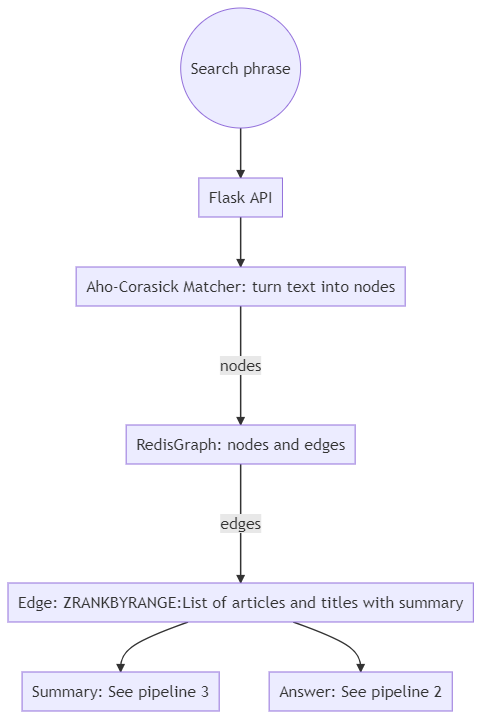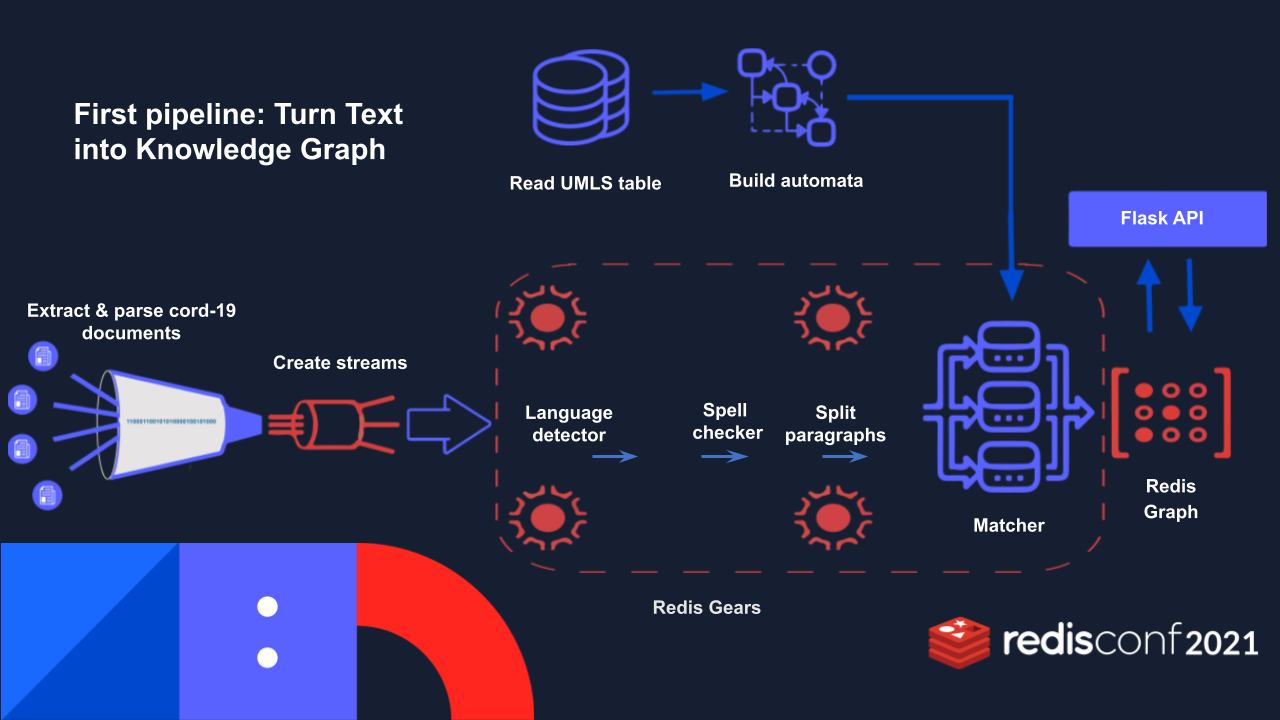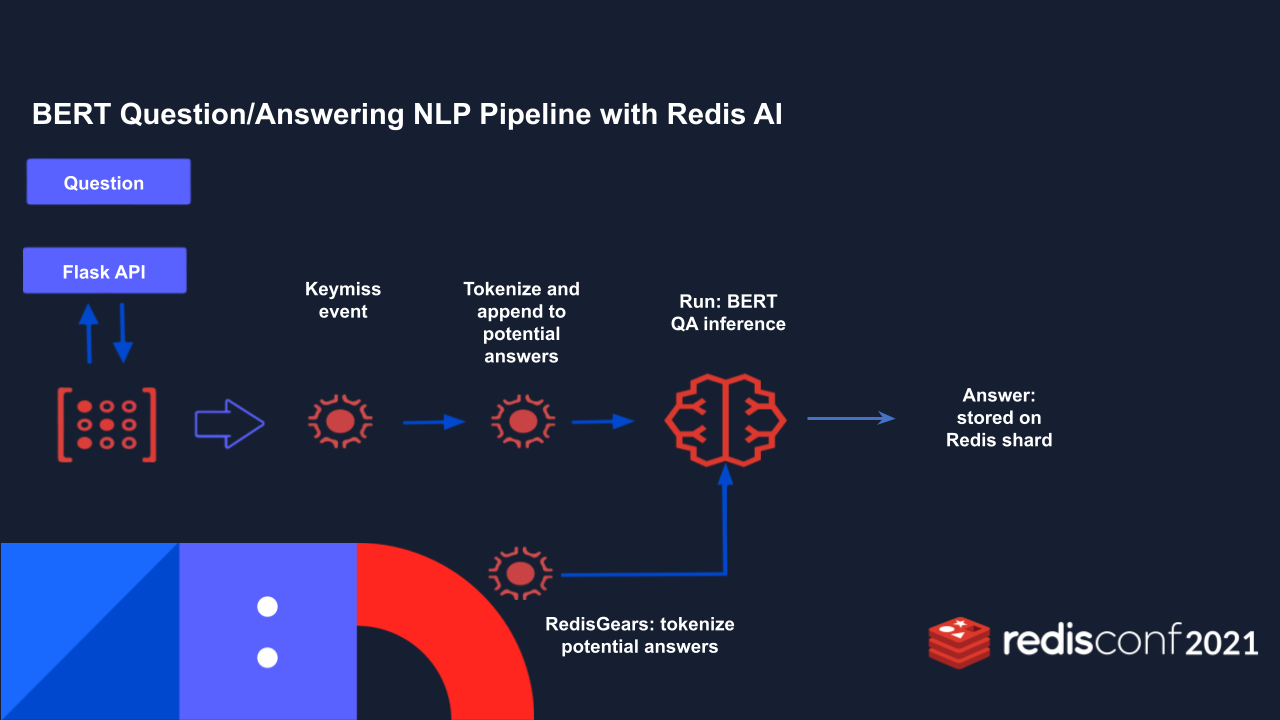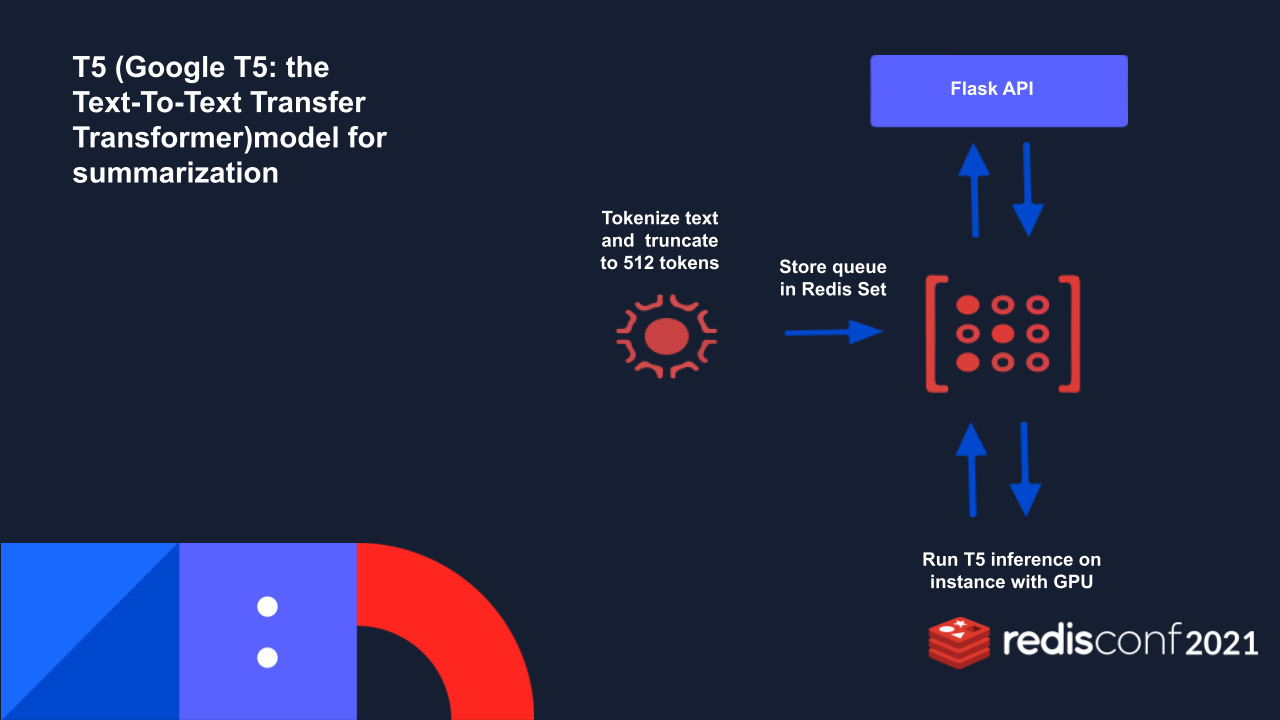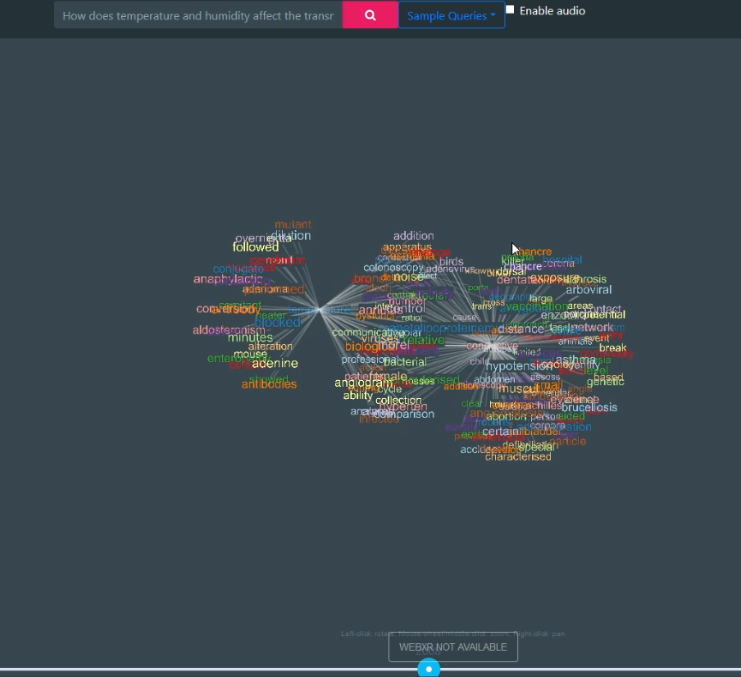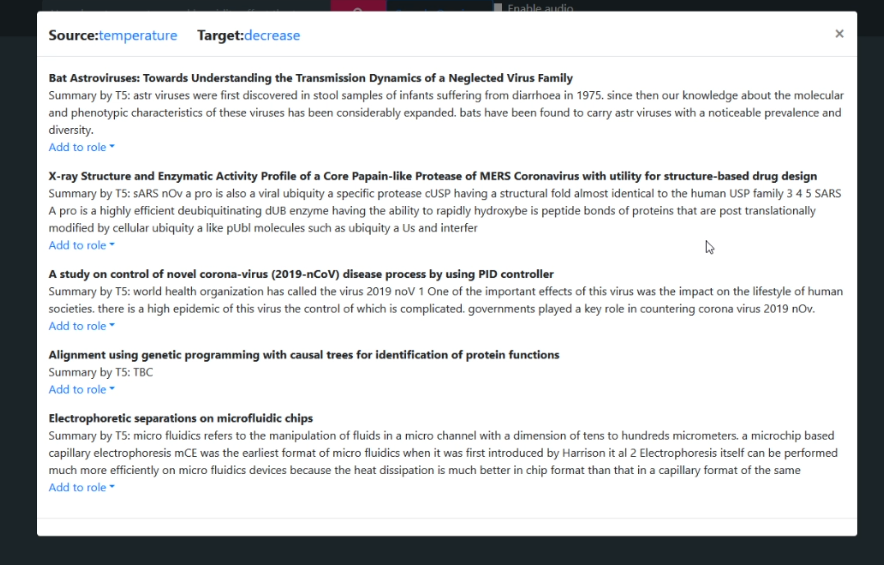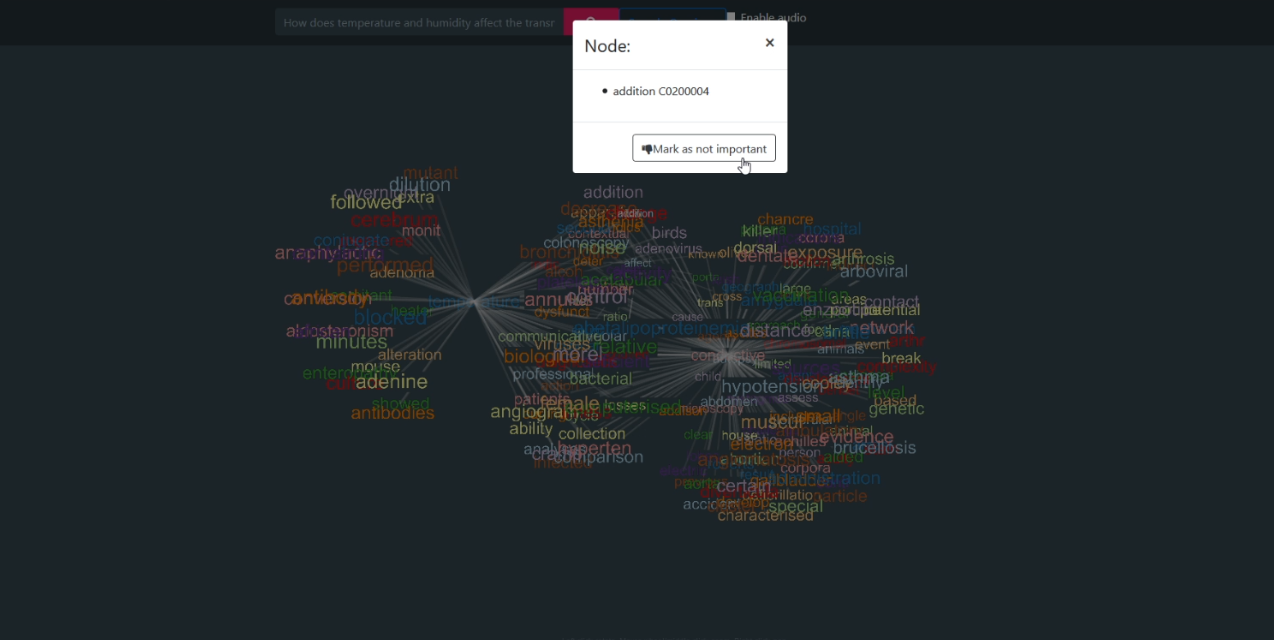To fight ever-increasing complexity, "The Pattern" projects help find relevant knowledge using Artificial Intelligence and novel UX elements, all powered by Redis - new generation real time data fabric turned into knowledge fabric
Overall repository for CORD19 medical NLP pipeline, API and UI, design and architecture.
Demo: http://thepattern.digital/
The Pattern is a community level search project, stay tuned for updates - we are moving from WebVR into practically useful search experience.
The medical profession put a lot of effort into collaboration, starting from Latin as a common language to industry-wide thesauruses like UMLS. Yet if full of scandals where publication in the prestigious journal would be retracted and the World Health Organisation would change its policy advice based on the article. I think "paper claiming that eating a bat-like Pokémon sparked the spread of COVID-19" takes a prize. One would say that editors in those journals don't do their job, and while it may seem true, I would say they had no chance: with a number of publications about COVID (SARS-V) passing 300+ per day, we need better tools to navigate via such flow of information.
When I am exploring topics on science or engineering, I look at the diversity of the opinion, not the variety of the same cluster of words, same thought. I want to avoid confirmation bias. I want to find articles relevant to the same concept, not necessarily the ones which have similar words. My focus is to build a natural language processing pipeline, capable of handling a large number of documents and concepts, incorporating System 1 AI (fast, intuitive reasoning) and System 2 (high-level reasoning) and then present knowledge in a modern VR/AR visualisation. Search or rather information exploration should be spatial preferably in VR (memory palace, see Theatre of Giulio Camillo). A force-directed graph is a path towards it, where visuals are assisted by text — relevant text pops up on the connection and where people explore the concepts and then dig deeper into text. The purpose of the pipeline that knowledge should be re-usable and shareable.
Join our community on Discord or post in GitHub Discussions
Think about it as "Fair use" - free for personal and community use, if you would like to use it in commercial product, talk to us - we may be able to issue code or relevant part under different license.
Ensure that you install virtualenv in your system, docker and docker-compose (apt install docker-compose)
brew install pyenv-virtualenv
git clone --recurse-submodules https://github.com/applied-knowledge-systems/the-pattern.git
cd the-pattern
./start.sh
cd ./the-pattern-platform/
source ~/venv_cord19/bin/activate #or create new venv
pip install -r requirements.txt
bash cluster_pipeline.sh
Wait for a bit and then check:
- Redis Graph populated:
redis-cli -p 9001 -h 127.0.0.1 GRAPH.QUERY cord19medical "MATCH (n:entity) RETURN count(n) as entity_count"
redis-cli -p 9001 -h 127.0.0.1 GRAPH.QUERY cord19medical "MATCH (e:entity)-[r]->(t:entity) RETURN count(r) as edge_count"
- API responds:
curl -i -H "Content-Type: application/json" -X POST -d '{"search":"How does temperature and humidity affect the transmission of 2019-nCoV"}' http://localhost:8080/gsearch
cd the-pattern-ui
npm install
npm install -g @angular/cli@9
ng serve
cd the-pattern-api/qasearch/
sh start.sh
WARNING: this will download and pre-load 1.4 GB BERT QA model on each shard. May crash on laptop. Validate by running:
curl -H "Content-Type: application/json" -X POST -d '{"search":"How does temperature and humidity affect the transmission of 2019-nCoV?"}' http://localhost:8080/qasearch
Go to the repository on RedisGears cluster from main "the-pattern" repo:
cd the-pattern-bart-summary
# source same enviroment with gears-cli (no other dependencies required)
source ~/venv_cord19/bin/activate
gears-cli run --host 127.0.0.1 --port 30001 tokenizer_gears_for_sum.py --requirements requirements.txt
This is a synchronious task, may time out but can be safely re-run (keeps track in RedisMod, idempotent operations)
On GPU enabled instance or server, configure NVidia drivers:
sudo apt update
sudo apt install nvidia-340
lspci | grep -i nvidia
sudo apt-get install linux-headers-$(uname -r)
distribution=$(. /etc/os-release;echo $ID$VERSION_ID | sed -e 's/\.//g')
wget https://developer.download.nvidia.com/compute/cuda/repos/$distribution/x86_64/cuda-$distribution.pin
sudo mv cuda-$distribution.pin /etc/apt/preferences.d/cuda-repository-pin-600
sudo apt-key adv --fetch-keys https://developer.download.nvidia.com/compute/cuda/repos/$distribution/x86_64/7fa2af80.pub
echo "deb http://developer.download.nvidia.com/compute/cuda/repos/$distribution/x86_64 /" | sudo tee /etc/apt/sources.list.d/cuda.list
sudo apt-get update
sudo apt-get -y install cuda-drivers
# install anaconda
curl -O https://repo.anaconda.com/archive/Anaconda3-2020.11-Linux-x86_64.sh
sh Anaconda3-2020.11-Linux-x86_64.sh
source ~/.bashrc
conda create -n thepattern_env python=3.8
conda activate thepattern_env
conda install pytorch==1.7.1 torchvision==0.8.2 torchaudio==0.7.2 cudatoolkit=11 -c pytorch
Configure access from instance to RedisGraph docker image (or use Redis Enterprise), I use zerotier to connect VMs together.
git clone https://raw.githubusercontent.com/applied-knowledge-systems/the-pattern-bart-summary.git
#start tmux
conda activate thepattern_env
pip3 install -r requirements.txt
python3 summary_processor_t5.py
the-pattern-platform/parse_publish_dates_threaded.py - unzips and parses metadata.zip, where names of files, titles and years extracted into HASH:
redis_client.hset(f"article_id:{article_id}",mapping={'title': each_line['title']})
redis_client.hset(f"article_id:{article_id}",mapping={'publication_date':each_line['publish_time']})
the-pattern-platform/RedisIntakeRedisClusterSample.py works by reading JSON files - samples in data/sample folder, parsing JSON into String:
rediscluster_client.set(f"paragraphs:{article_id}"," ".join(article_body))
the-pattern-platform/gears_pipeline_sentence_register.py - main pre-processing tasks using RedisGears, listens to updates on paragraphs: key:
gb = GB('KeysReader')
gb.filter(filter_language)
gb.flatmap(parse_paragraphs)
gb.map(spellcheck_sentences)
gb.foreach(save_sentences)
gb.count()
gb.register('paragraphs:*',keyTypes=['string','hash'], mode="async_local")
uses RedisGears and HSET/SADD.
the-pattern-platform/sentences_matcher_register.py
bg = GearsBuilder('KeysReader')
bg.foreach(process_item)
bg.count()
bg.register('sentence:*', mode="async_local",onRegistered=OnRegisteredAutomata)
Creates stream on each shard for next step using 'XADD', 'edges_matched_{%s}' % shard_id, '*','source',f'{source_entity_id}','destination',f'{destination_entity_id}','source_name',source_canonical_name,'destination_name',destination_canonical_name,'rank',1,'year',year)
and increasing sentence score:
zincrby(f'edges_scored:{source_entity_id}:{destination_entity_id}',1, sentence_key)
the-pattern-platform/edges_to_graph_streamed.py works by creating nodes, edges in RedisGraph or updating their ranking:
"GRAPH.QUERY", "cord19medical","""MERGE (source: entity { id: '%s', label :'entity', name: '%s'})
ON CREATE SET source.rank=1
ON MATCH SET source.rank=(source.rank+1)
MERGE (destination: entity { id: '%s', label: 'entity', name: '%s' })
ON CREATE SET destination.rank=1
ON MATCH SET destination.rank=(destination.rank+1)
MERGE (source)-[r:related]->(destination)
ON CREATE SET r.rank=1, r.year=%s
ON MATCH SET r.rank=(r.rank+1)
ON CREATE SET r.rank=1
ON MATCH SET r.rank=(r.rank+1)""" % (source_id ,source_name,destination_id,destination_name,year))
the-pattern-api/graphsearch/graph_search.py
Edges with years node ids, limits and years:
"""WITH $ids as ids MATCH (e:entity)-[r]->(t:entity) where (e.id in ids) and (r.year in $years) RETURN DISTINCT e.id, t.id, max(r.rank), r.year ORDER BY r.rank DESC LIMIT $limits"""
Nodes:
"""WITH $ids as ids MATCH (e:entity) where (e.id in ids) RETURN DISTINCT e.id,e.name,max(e.rank)"""
Also app.py uses zrangebyscore(f"edges_scored:{edges_query}",'-inf','inf',0,5) to find most scored articles
A lot of RedisGears code, main file, SADD, SMEMBER, SREM.
import httpimport
with httpimport.remote_repo(['stop_words'], "https://raw.githubusercontent.com/explosion/spaCy/master/spacy/lang/en/"):
import stop_words
from stop_words import STOP_WORDS
with httpimport.remote_repo(['utils'], "https://raw.githubusercontent.com/applied-knowledge-systems/the-pattern-automata/main/automata/"):
import utils
from utils import loadAutomata, find_matches
show it to you security architect. This is nessesary because RedisGears doesn't support submission of projects or modules.
Most advanced code is in the-pattern-api/qasearch/qa_bert.py querying RedisGears+RedisAI cluster given user's question:
get "bertqa{5M5}_PMC140314.xml:{5M5}:44_When air samples collected?"
this queries bertqa prefix on shard {5MP} where PMC140314.xml:{5M5}:44 is the key of pre-tokenised REDIS AI Tensor (potential answer) and "When air samples collected?" is the question from the user. Redis Gears captures keymiss event the-pattern-api/qasearch/qa_redisai_gear_map_keymiss_np.py:
gb = GB('KeysReader')
gb.map(qa_cached_keymiss)
gb.register(prefix='bertqa*', commands=['get'], eventTypes=['keymiss'], mode="async_local")
and runs redisAI.getTensorFromKey, redisAI.createModelRunner, redisAI.createTensorFromBlob, redisAI.modelRunnerAddInput, redisAI.modelRunnerRunAsync in async/await - non-blocking main thread mode, models pre-loaded on each shard using AI.modelset in the-pattern-api/qasearch/export_load_bert.py.
Summarisation works by running on sentence: prefix and running t5-base transformers tokenizer, saving results in RedisGraph using simple SET command and python.pickle module, adding summary key (derived from article_id) into rconn.sadd('processed_docs_stage3_queue', summary_key).
summary_processor_t5.py subscribes to queue running simple SET and SREM commands and then updates hash in RedisGraph: redis_client.hset(f"article_id:{article_id}",mapping={'summary': output})
The Pattern platform using latest (bleeding edge) RedisGears and RedisAI features, best way to deploy and use docker compose provided and start.sh. If API server fails to boot (fetching additional libraries), use docker-compose -f docker-compose.dev.yml up -d --build --no-deps api.
RedisGraph docker is using standard redismod docker image and can be deployed on RedisEnterprise.
Buttons below only deploy API layer. Register on Redis Enterprise and pass REDIS_ENDPOINT_URI and REDIS_PASSWORD
RedisGears have enormous potential, particularly for text processing - you can process your data “on data” without need to move them in and out of memory, summary of the important points: 1.In Memory storage (Horizontally scalable if it’s Redis cluster) 2.Processing of data (on data) without need to move in and out 3.Gears - like Spark on Hadoop, process data intelligently on storage(in-memory) without need to move data in and out 4.Redis in cluster mode with RedisGears and python enabled takes 20 MB RAM. Think how much more data you can shuffle into your laptop or server.
The name is from Roger Zelazny "The Chronicles of Amber" where The Pattern is the foundation of the universe of order.
I believe in the modern world we need new tools to fight the chaos of the information, particularly for such important issues as medical research and literature.
